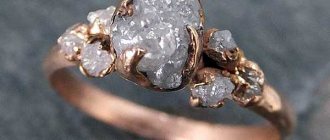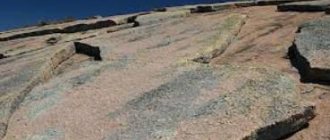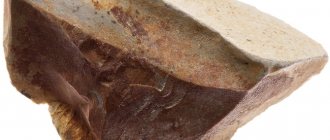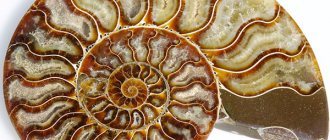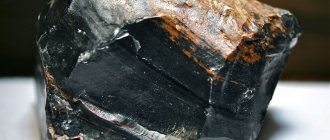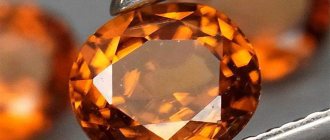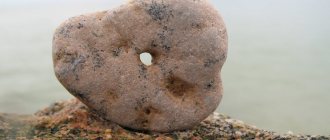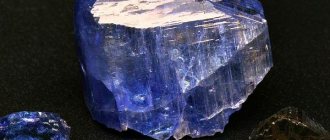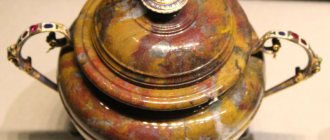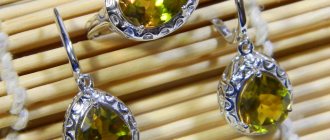comparison table
| Dolomite | Shungite | Lemesit | Sandstone | Porphyrite |
| Density | 2400 – 2650 kg/m3 | 2250 – 2840 kg/m3 | 2630 – 2750 kg/m3 | 2340 – 2530 kg/m3 | 2400 – 2520 kg/m3 |
| Dry compressive strength | 104.7/103.0 MPa (strong) | 150 MPa (durable) | 94 MPa (strong) | 105 MPa (strong) | 340 MPa (durable) |
| Density limit under compression in a water-saturated state | 102.5/101.4 MPa (strong) | 100 MPa (durable) | 83 MPa (strong) | 80 MPa (durable) | 120 MPa (durable) |
| Water absorption | 0,0748 % | 0,4 — 0,5 % | 0,07 — 0,95 % | 0,69 — 2,7 % | 0,5 — 0,75 % |
| Porosity | 1,70 % | 0,5 — 5 % | 1,70 % | 0,69 — 6,7 % | 1,43 — 2,17 % |
| Thermal conductivity | 3.2 W/m 2oK | 3.8 - 5 W/m 2oK | ~3 W/m 2oK | 1.8 W/m 2oK | 4 - 6 W/m2oK |
| Abrasion | 0.45 g/cm2 | 0,5 — 1,1 | 1.62 g/cm2 | 0.6 - 1.2 g/cm2 | 1.1 g/cm2 |
| Radiation parameter (A eff ERN) | 73.7 Bq/kg (class 1) | 190 Bq/kg (1 class) | 40-52 Bq/kg (class 1) | 138 Bq/kg (class 1) | 57 Bq/kg (class 1) |
What is this characteristic?
For any substance, density refers to mass divided by unit volume. Since rocks (i.e., minerals) have a heterogeneous composition and include elements of different atomic masses, the physical characteristics of their density can vary significantly. Also, the density of stones depends not only on the gravity of the elements that make them up, but also on how tightly the elementary particles are “packed” in their internal structure.
Mineralogy deals with the study of mineral density. The density of a stone is calculated by dividing the mass of a mineral sample per unit volume by the mass of water of the same volume at a temperature of 4 ⁰C. For example, the sample weight is 200 grams. Water in the same volume 40 grams. In this case, the density of this stone will be equal to 5.
The density of stones is measured in kilograms per cubic meter or grams per cubic centimeter.
Dolomite - physical and technical characteristics
- Average compression density: 2650 kg/m3
- Compressive strength limit (across/along the layering): - in a dry state (across/along the layering): 104.7/103.0 MPa (strong) - in a water-saturated state: 102.5/101.4 MPa (strong)
- Strength reduction coefficient when saturated with water: 0.86-0.93 MPa
- Water absorption: 0,0748 %
- Porosity: 1,70 %
- Abrasion: 0.45 g/cm2
- Thermal conductivity: 3.2 W/μ
- Frost resistance grade: 50 (frost-resistant)
- Impact resistance: 87.5 cm
- Radiation parameter (A eff ERN): 73.7 Bq/kg (class 1)
Go to directory: Dolomite
Immersion of stone in heavy liquids
By immersing a stone in “heavy water”, its density is determined quite accurately and within just a few minutes.
Despite the fact that this method gives a 100% result and takes very little time, it is not used often due to its high cost. The costs of this must be financially justified, so the method is used mainly to determine the density of precious stones, in particular to identify fakes.
Everything is simple here: the density of “heavy water” and diamond, for example, is the same, and if you dip a synthetic fake into it, it will immediately float to the surface like a cork. And if the density of a stone of natural origin is equal to the density of liquid, it will neither float nor sink, but will remain in a floating state.
Shungite - physical and technical characteristics
- Average density: 2.25-2.84 g/cm3;
- Compressive strength range: - dry: 150 MPa (strong); — in a water-saturated state: 100 MPa (durable);
- Water absorption: 0,4 — 0,5 %;
- Porosity: 0,5 — 5 %;
- Thermal conductivity: 3.8 - 5 W/m·k;
- Radiation parameter (A eff ERN): 190 Bq/kg (class 1);
- Compressive strength: 100–150 MPa ;
- Electrical conductivity – 1500 sim/m ;
- Developed internal surface – up to 20 m2/g ;
- Adsorption activity: - for phenol - 14 mg/g ; — for thermolysis resins – 20 mg/g ; — for petroleum products – more than 40 mg/g ;
It has sorption, catalytic, bactericidal properties, and biological activity.
Adsorption activity manifests itself in relation to pathogenic saprophytes, phages, bactericidal cells, etc. Go to directory: Shungite
Birth of a stone
Everyone understands perfectly well that solid rocks did not appear out of thin air in an instant. For their formation, as for the origin of all life on the planet, it took millions of years of evolution and special conditions created by nature itself.
Any stone is the hardened magma of prehistoric volcanoes that erupted everywhere on the planet billions of years ago, when it was still young and more reminiscent of the surface of present-day Venus. And the process itself, and the conditions, and the influence of many external factors and constantly changing climatic conditions - all this directly influenced not only the birth of the stone, but also the formation of its varieties, completely different from each other.
Therefore, a specialist will determine the density of the stone without any equipment, knowing only its type.
Lemesit - physical and technical characteristics
- Average compression density: 2630-2900 kg/m3
- Compressive strength limit: - in a dry state: 94 MPa (strong) - in a water-saturated state: 83 MPa (strong)
- Strength reduction coefficient when saturated with water: 0.87-0.94 MPa
- Water absorption: 0,07-0,95 %
- Porosity: 1,70 %
- Abrasion: 1.62 g/cm2
- Frost resistance grade: 25, 50 (frost-resistant)
- Radiation parameter (A eff ERN): 40-52 Bq/kg (class 1)
- Loss on ignition: 33.96-42.12
Mineralogical composition
- Calcite: 95-100%
- Quartz: from single grains to 5%
Chemical composition (oxide content)
- aluminum: 1.53-5.13
- iron oxide: 0.07-1.94
- iron oxide: 0.47-2.47
- potassium: 0.33-1.25
- calcium: 33.25-48.75
- silicon: 6.1-15.55
- manganese: 0.02-0.12
- sodium: 0.09-1.15
- sulfur: 0.01
- titanium: 0.15-0.26
- phosphorus: 0.02-0.03
Go to directory: Lemesit
Specific gravity table
Specific gravity is a way of expressing the relative density of a stone. It changes in the form of a ratio between the density of the jewelry stone in question and the density of water. Specific gravity is expressed in the form of a number that indicates how much heavier a gemstone is than an equal volume of water.
From a scientific point of view, specific gravity is defined as the ratio of the mass of a given substance to the mass of an equal volume of water at 4 degrees Celsius. Most of the substances that make up gemstones are two to four times denser than water. Specific gravity values are displayed as decimals, such as 4.00 for corundum, 3.52 for diamond, and 2.72 for quartz. Zircon is one of the densest jewelry stones; its specific gravity can reach up to 4.73!
Cassiterite, hematite and rainbow pyrite are stones with a high specific gravity
Specific gravity is an important tool in determining the type of gemstone that is useful to both stone buyers and gemologists. A 1 carat stone with a higher specific gravity will be smaller than a 1 carat stone with a lower specific gravity. So don't be surprised if the sapphire you buy turns out to be smaller than your diamond. This is because the specific gravity of sapphire is greater. On the other hand, a 5-carat tourmaline you purchase may be larger than you expected because tourmaline has a fairly low specific gravity.
In the table below you will find the specific gravity values for 145 varieties of jewelry stones, arranged in descending order.
| Cassiterite |
| Specific gravity | 6,7 — 7,1 |
| Chemical composition | Tin oxide |
| Crystal structure | Tetragonal |
| Hematite |
| Specific gravity | 5,12 — 5,28 |
| Chemical composition | Iron oxide |
| Crystal structure | Trigonal |
| Rainbow Pyrite |
| Specific gravity | 5 — 5,2 |
| Chemical composition | Cubic |
| Crystal structure | Iron sulfide |
| Spressartine garnet |
| Specific gravity | 4,12 — 4,18 |
| Chemical composition | Aluminum manganese silicate |
| Crystal structure | Cubic |
| Smithsonite |
| Specific gravity | 4 — 4,65 |
| Chemical composition | Zinc carbonate |
| Crystal structure | Trigonal |
| Star ruby |
| Specific gravity | 3,97 — 4,05 |
| Chemical composition | Aluminium oxide |
| Crystal structure | Trigonal |
| Ruby |
| Specific gravity | 3,97 — 4,05 |
| Chemical composition | Aluminium oxide |
| Crystal structure | Trigonal |
| Color changing sapphire |
| Specific gravity | 3,95 — 4,03 |
| Chemical composition | Aluminium oxide |
| Crystal structure | Trigonal |
| Sapphire |
| Specific gravity | 3,95 — 4,03 |
| Chemical composition | Aluminium oxide |
| Crystal structure | Trigonal |
| Star sapphire |
| Specific gravity | 3,95 — 4,03 |
| Chemical composition | Aluminium oxide |
| Crystal structure | Trigonal |
| almandine garnet |
| Specific gravity | 3,93 — 4,3 |
| Chemical composition | Aluminum iron silicate |
| Crystal structure | Cubic |
| Zircon |
| Specific gravity | 3,93 — 4,73 |
| Chemical composition | Zirconium silicate |
| Crystal structure | Tetragonal |
| Sphalerite |
| Specific gravity | 3,9 — 4,1 |
| Chemical composition | Zinc sulfide |
| Crystal structure | Cubic |
| Garnet rhodolite |
| Specific gravity | 3,85 |
| Chemical composition | Aluminum and magnesium silicate |
| Crystal structure | Cubic |
| Gaspeite |
| Specific gravity | 3,71 |
| Chemical composition | Nickel, magnesium and iron carbonate |
| Crystal structure | Trigonal |
| Melanitis |
| Specific gravity | 3,7 — 4,1 |
| Chemical composition | Calcium iron silicate |
| Crystal structure | Cubic |
| Chrysoberyl cat's eye |
| Specific gravity | 3,7 — 3,78 |
| Chemical composition | Aluminum and beryllium oxide |
| Crystal structure | Rhombic |
| Alexandrite |
| Specific gravity | 3,7 — 3,78 |
| Chemical composition | Aluminum and beryllium oxide |
| Crystal structure | Rhombic |
| Azurite |
| Specific gravity | 3,7 — 3,9 |
| Chemical composition | Basic copper carbonate |
| Crystal structure | Monoclinic |
| Garnet demantoid |
| Specific gravity | 3,7 — 4,1 |
| Chemical composition | Calcium iron silicate |
| Crystal structure | Cubic |
| Chrysoberyl |
| Specific gravity | 3,7 — 3,78 |
| Chemical composition | Aluminum and beryllium oxide |
| Crystal structure | Rhombic |
| Hessonite garnet |
| Specific gravity | 3,64 — 3,69 |
| Chemical composition | Calcium aluminum silicate |
| Crystal structure | Cubic |
| Color changing garnet |
| Specific gravity | 3,62 — 3,87 |
| Chemical composition | Magnesium aluminum silicate |
| Crystal structure | Cubic |
| Garnet pyrope |
| Specific gravity | 3,62 — 3,87 |
| Chemical composition | Magnesium aluminum silicate |
| Crystal structure | Cubic |
| star garnet |
| Specific gravity | 3,62 — 3,87 |
| Chemical composition | Iron and aluminum silicate |
| Crystal structure | Rhombic |
| Grossular garnet |
| Specific gravity | 3,57 — 3,73 |
| Chemical composition | Calcium aluminum silicate |
| Crystal structure | Cubic |
| Malian garnet |
| Specific gravity | 3,57 — 3,73 |
| Chemical composition | Calcium aluminum silicate |
| Crystal structure | Cubic |
| Tsavorite garnet |
| Specific gravity | 3,57 — 3,73 |
| Chemical composition | Calcium aluminum silicate |
| Crystal structure | Rhombic |
| Spinel |
| Specific gravity | 3,54 — 3,63 |
| Chemical composition | Magnesium Aluminum Oxide |
| Crystal structure | Cubic |
| Kyanite |
| Specific gravity | 3,57 — 3,7 |
| Chemical composition | Aluminum silicate |
| Crystal structure | Triclinic |
| Titanite |
| Specific gravity | 3,52 — 3,54 |
| Chemical composition | Calcium titanium silicate |
| Crystal structure | Monoclinic |
| Diamond |
| Specific gravity | 3,5 — 3,53 |
| Chemical composition | Carbon |
| Crystal structure | Cubic |
| Topaz |
| Specific gravity | 3,49 — 3,57 |
| Chemical composition | Aluminum fluorosilicate |
| Crystal structure | Rhombic |
| Mystical Topaz |
| Specific gravity | 3,49 — 3,57 |
| Chemical composition | Aluminum fluorosilicate |
| Crystal structure | Rhombic |
| Imperial topaz |
| Specific gravity | 3,49 — 3,57 |
| Chemical composition | Aluminum fluorosilicate |
| Crystal structure | Rhombic |
| Azotic topaz |
| Specific gravity | 3,49 — 3,57 |
| Chemical composition | Aluminum fluorosilicate |
| Crystal structure | Rhombic |
| Rutile Topaz |
| Specific gravity | 3,49 — 3,57 |
| Chemical composition | Aluminum fluorosilicate |
| Crystal structure | Rhombic |
| Rhodochrosite |
| Specific gravity | 3,45 — 3,7 |
| Chemical composition | Manganese carbonate |
| Crystal structure | Trigonal |
| Rhodonite |
| Specific gravity | 3,4 — 3,74 |
| Chemical composition | Manganese silicate |
| Crystal structure | Triclinic |
| Ruby in zoisite |
| Specific gravity | 3,35 |
| Chemical composition | Rock containing zoisite, ruby and hornblende |
| Crystal structure | Rhombic |
| Tanzanite |
| Specific gravity | 3,35 |
| Chemical composition | Calcium aluminum silicate |
| Crystal structure | Rhombic |
| Vesuvian |
| Specific gravity | 3,32 — 3,47 |
| Chemical composition | Complex calcium aluminum silicate |
| Crystal structure | Tetragonal |
| Cat's eye diaspora |
| Specific gravity | 3,3 — 3,39 |
| Chemical composition | Alumina hydrate |
| Crystal structure | Rhombic |
| Hemimorphite |
| Specific gravity | 3,3 — 3,5 |
| Chemical composition | Hydrous Basic Zinc Silicate |
| Crystal structure | Rhombic |
| Color-changing diaspores |
| Specific gravity | 3,3 — 3,39 |
| Chemical composition | Alumina hydrate |
| Crystal structure | Rhombic |
| Peridot |
| Specific gravity | 3,28 — 3,48 |
| Chemical composition | Magnesium Iron Silicate |
| Crystal structure | Rhombic |
| Axinite |
| Specific gravity | 3,26 — 3,36 |
| Chemical composition | Calcium Aluminum Borosilicate |
| Crystal structure | Triclinic |
| Quartz dumortierite |
| Specific gravity | 3,26 — 3,41 |
| Chemical composition | Aluminum borosilicate intergrown with quartz |
| Crystal structure | Rhombic |
| Malachite |
| Specific gravity | 3,25 — 4,1 |
| Chemical composition | Copper dihydroxycarbonate |
| Crystal structure | Monoclinic |
| Sillimanite cat's eye |
| Specific gravity | 3,23 |
| Chemical composition | Aluminum silicate |
| Crystal structure | Rhombic |
| Chrome diopside |
| Specific gravity | 3,22 — 3,38 |
| Chemical composition | Calcium and magnesium silicate |
| Crystal structure | Monoclinic |
| Tashmarine diopside |
| Specific gravity | 3,22 — 3,38 |
| Chemical composition | Calcium and magnesium silicate |
| Crystal structure | Monoclinic |
| Star diopside |
| Specific gravity | 3,22 — 3,38 |
| Chemical composition | Calcium manganese silicate |
| Crystal structure | Monoclinic |
| Giddenite |
| Specific gravity | 3,17 — 3,19 |
| Chemical composition | Lithium aluminum silicate |
| Crystal structure | Monoclinic |
| Apatite |
| Specific gravity | 3,16 — 3,23 |
| Chemical composition | Basic fluorine and chlorine calcium phosphate |
| Crystal structure | Hexagonal |
| Cat's eye apatite |
| Specific gravity | 3,16 — 3,23 |
| Chemical composition | Basic fluorine and chlorine calcium phosphate |
| Crystal structure | Hexagonal |
| Spodumene |
| Specific gravity | 3,15 — 3,21 |
| Chemical composition | Lithium aluminum silicate |
| Crystal structure | Monoclinic |
| Kunzite |
| Specific gravity | 3,15 — 3,21 |
| Chemical composition | Lithium aluminum silicate |
| Crystal structure | Monoclinic |
| Clinohumite |
| Specific gravity | 3,13 — 3,75 |
| Chemical composition | Magnesium silicate |
| Crystal structure | Monoclinic |
| Andalusite |
| Specific gravity | 3,05 — 3,2 |
| Chemical composition | Aluminum silicate |
| Crystal structure | Rhombic |
| Fluorite |
| Specific gravity | 3 — 3,25 |
| Chemical composition | Calcium fluoride |
| Crystal structure | Cubic |
| Nuumit |
| Specific gravity | 3 |
| Chemical composition | Rock containing gedrite and anthophyllite |
| Crystal structure | Layered fibrous structure |
| Danburite |
| Specific gravity | 2,97 — 3,03 |
| Chemical composition | Calcium borosilicate |
| Crystal structure | Rhombic |
| Jade |
| Specific gravity | 2,9 — 3,03 |
| Chemical composition | Basic silicate of calcium, magnesium and iron |
| Crystal structure | Monoclinic |
| Jade jade |
| Specific gravity | 2,9 — 3,03 |
| Chemical composition | Calcium, magnesium and iron silicate |
| Crystal structure | Monoclinic |
| Tourmaline |
| Specific gravity | 2,83 — 3,32 |
| Chemical composition | Variable composition of silicates of aluminum, iron, magnesium, sodium, lithium or potassium |
| Crystal structure | Trigonal |
| Chrome tourmaline |
| Specific gravity | 2,82 — 3,32 |
| Chemical composition | Variable composition of silicates of aluminum, iron, magnesium, sodium, lithium or potassium |
| Crystal structure | Trigonal |
| Prehnite |
| Specific gravity | 2,82 — 2,94 |
| Chemical composition | Basic calcium aluminum silicate |
| Crystal structure | Rhombic |
| Paraiba tourmaline |
| Specific gravity | 2,82 — 3,32 |
| Chemical composition | Variable composition of silicates of aluminum, iron, magnesium, sodium, lithium or potassium |
| Crystal structure | Trigonal |
| Cat's eye tourmaline |
| Specific gravity | 2,82 — 3,32 |
| Chemical composition | Variable composition of silicates of aluminum, iron, magnesium, sodium, lithium or potassium |
| Crystal structure | Trigonal |
| Lepidolite |
| Specific gravity | 2,8 — 2,9 |
| Chemical composition | Fluorosilicate of potassium, lithium and aluminum |
| Crystal structure | Monoclinic |
| Verdit |
| Specific gravity | 2,76 — 3 |
| Chemical composition | Serpentine breed |
| Crystal structure | Monoclinic |
| Sugilite |
| Specific gravity | 2,76 — 2,8 |
| Chemical composition | Complex composition containing potassium, sodium, lithium, iron, manganese, aluminum |
| Crystal structure | Hexagonal |
| Ammolite |
| Specific gravity | 2,75 — 2,8 |
| Chemical composition | Mainly aragonite (with calcite, silica and pyrite) |
| Crystal structure | Absent |
| Larimar |
| Specific gravity | 2,74 — 2,88 |
| Chemical composition | Sodium calcium silicate hydrate with manganese |
| Crystal structure | Triclinic |
| Calcite |
| Specific gravity | 2,69 — 2,71 |
| Chemical composition | Calcium carbonate |
| Crystal structure | Trigonal |
| Aquamarine |
| Specific gravity | 2,68 — 2,74 |
| Chemical composition | Beryllium aluminum silicate |
| Crystal structure | Hexagonal |
| Aquamarine cat's eye |
| Specific gravity | 2,68 — 2,74 |
| Chemical composition | Beryllium aluminum silicate |
| Crystal structure | Hexagonal |
| Beryl |
| Specific gravity | 2,67 — 2,78 |
| Chemical composition | Beryllium aluminum silicate |
| Crystal structure | Hexagonal |
| Emerald |
| Specific gravity | 2,67 — 2,78 |
| Chemical composition | Beryllium aluminum silicate |
| Crystal structure | Hexagonal |
| Goshenite |
| Specific gravity | 2,66 — 2,87 |
| Chemical composition | Beryllium aluminum silicate |
| Crystal structure | Hexagonal |
| Andesine-labradorite |
| Specific gravity | 2,66 — 2,68 |
| Chemical composition | Sodium, calcium, aluminum silicate |
| Crystal structure | Triclinic |
| Morganite |
| Specific gravity | 2,66 — 2,87 |
| Chemical composition | Beryllium aluminum silicate |
| Crystal structure | Hexagonal |
| Amethyst |
| Specific gravity | 2,65 |
| Chemical composition | Silica |
| Crystal structure | Trigonal |
| Rose quartz |
| Specific gravity | 2,65 |
| Chemical composition | Silica |
| Crystal structure | Trigonal |
| Ametrine |
| Specific gravity | 2,65 |
| Chemical composition | Silica |
| Crystal structure | Trigonal |
| Citrine |
| Specific gravity | 2,65 |
| Chemical composition | Silica |
| Crystal structure | Hexagonal |
| Quartz cat eye |
| Specific gravity | 2,65 |
| Chemical composition | Silica |
| Crystal structure | Trigonal |
| Rutile quartz |
| Specific gravity | 2,65 |
| Chemical composition | Silicon dioxide with titanium inclusions |
| Crystal structure | Trigonal |
| Onyx |
| Specific gravity | 2,65 — 2,91 |
| Chemical composition | Silica |
| Crystal structure | Trigonal |
| Smoky Quartz |
| Specific gravity | 2,65 |
| Chemical composition | Silica |
| Crystal structure | Trigonal |
| Strawberry Quartz |
| Specific gravity | 2,65 |
| Chemical composition | Silicon dioxide with iron oxide inclusions |
| Crystal structure | Trigonal |
| Mystical Quartz |
| Specific gravity | 2,65 |
| Chemical composition | Silica |
| Crystal structure | Trigonal |
| Jewelry quartz |
| Specific gravity | 2,65 |
| Chemical composition | Silica |
| Crystal structure | Trigonal |
| Labradorite |
| Specific gravity | 2,65 — 2,75 |
| Chemical composition | Sodium, calcium, aluminum silicate |
| Crystal structure | Triclinic |
| Aventurine |
| Specific gravity | 2,64 — 2,69 |
| Chemical composition | Silica |
| Crystal structure | Trigonal |
| Star Sunstone |
| Specific gravity | 2,62-2,65 |
| Chemical composition | Sodium, calcium, aluminum silicate |
| Crystal structure | Triclinic |
| Sun stone |
| Specific gravity | 2,62-2,65 |
| Chemical composition | Sodium, calcium, aluminum silicate |
| Crystal structure | Triclinic |
| Petersit |
| Specific gravity | 2,6 |
| Chemical composition | Silica |
| Crystal structure | Unit |
| Agate |
| Specific gravity | 2,6 — 2,64 |
| Chemical composition | Silica |
| Crystal structure | Trigonal |
| Fossil coral |
| Specific gravity | 2,6 — 2,7 |
| Chemical composition | Silica |
| Crystal structure | Trigonal |
| Pearl |
| Specific gravity | 2,6 — 2,85 |
| Chemical composition | Calcium carbonate |
| Crystal structure | Rhombic |
| Coral |
| Specific gravity | 2,6 — 2,7 |
| Chemical composition | Calcium carbonate |
| Crystal structure | Trigonal |
| Agate geode |
| Specific gravity | 2,6 — 2,64 |
| Chemical composition | Silica |
| Crystal structure | Trigonal |
| Chrysoprase |
| Specific gravity | 2,58 — 2,64 |
| Chemical composition | Silica |
| Crystal structure | Trigonal |
| Iolite |
| Specific gravity | 2,58 — 2,66 |
| Chemical composition | Aluminum and magnesium silicate |
| Crystal structure | Rhombic |
| Tiger's Eye in the Matrix |
| Specific gravity | 2,58 — 2,64 |
| Chemical composition | Rock containing layers of quartz and iron oxide |
| Crystal structure | Trigonal |
| Dendritic agate |
| Specific gravity | 2,58 — 2,64 |
| Chemical composition | Silica |
| Crystal structure | Trigonal |
| Fire agate |
| Specific gravity | 2,58 — 2,64 |
| Chemical composition | Silica |
| Crystal structure | Trigonal |
| Chalcedony |
| Specific gravity | 2,58 — 2,64 |
| Chemical composition | Silica |
| Crystal structure | Trigonal |
| Rose-colored star quartz |
| Specific gravity | 2,58 — 2,64 |
| Chemical composition | Silica |
| Crystal structure | Hexagonal |
| Peanut wood |
| Specific gravity | 2,58 — 2,91 |
| Chemical composition | Silica |
| Crystal structure | Trigonal |
| Carnelian |
| Specific gravity | 2,58 — 2,64 |
| Chemical composition | Silica |
| Crystal structure | Trigonal |
| Heliotrope |
| Specific gravity | 2,58 — 2,64 |
| Chemical composition | Silica |
| Crystal structure | Trigonal |
| Eye of the Tiger |
| Specific gravity | 2,58 — 2,64 |
| Chemical composition | Silica |
| Crystal structure | Trigonal |
| Scapolite |
| Specific gravity | 2,57 — 2,74 |
| Chemical composition | Sodium, calcium, aluminum silicate |
| Crystal structure | Tetragonal |
| Cat's eye scapolite |
| Specific gravity | 2,57 — 2,74 |
| Chemical composition | Sodium, calcium, aluminum silicate |
| Crystal structure | Tetragonal |
| Amazonite |
| Specific gravity | 2,56 — 2,58 |
| Chemical composition | Potassium aluminum silicate |
| Crystal structure | Triclinic |
| Orthoclase |
| Specific gravity | 2,56 — 2,58 |
| Chemical composition | Potassium aluminum silicate |
| Crystal structure | Monoclinic |
| Rainbow Moonstone |
| Specific gravity | 2,56 — 2,59 |
| Chemical composition | Potassium aluminum silicate |
| Crystal structure | Monoclinic |
| Star Moonstone |
| Specific gravity | 2,56 — 2,59 |
| Chemical composition | Potassium aluminum silicate |
| Crystal structure | Monoclinic |
| Moon rock |
| Specific gravity | 2,56 — 2,59 |
| Chemical composition | Potassium aluminum silicate |
| Crystal structure | Monoclinic |
| Seraphinite |
| Specific gravity | 2,55 — 2,75 |
| Chemical composition | Magnesium iron aluminum silicate hydroxide |
| Crystal structure | Monoclinic |
| Charoite |
| Specific gravity | 2,54 — 2,78 |
| Chemical composition | Complex silicate containing phosphorus, calcium and sodium |
| Crystal structure | Monoclinic |
| Lapis lazuli |
| Specific gravity | 2,5 — 3 |
| Chemical composition | Sodium, calcium, aluminum silicate |
| Crystal structure | Cubic |
| Mau-sit-sit |
| Specific gravity | 2,5 — 3,5 |
| Chemical composition | A rock containing cosmochlore, jadeite and albite in various proportions |
| Crystal structure | Monoclinic, prismatic |
| Jasper |
| Specific gravity | 2,5 — 2,9 |
| Chemical composition | Silica |
| Crystal structure | Trigonal |
| Howlit |
| Specific gravity | 2,45 — 2,58 |
| Chemical composition | Calcium borosilicate hydroxide |
| Crystal structure | Monoclinic |
| Serpentine |
| Specific gravity | 2,44 — 2,62 |
| Chemical composition | Basic magnesium silicate |
| Crystal structure | Microcrystalline |
| Variscite |
| Specific gravity | 2,42 — 2,58 |
| Chemical composition | Aluminum Phosphate Hydrate |
| Crystal structure | Rhombic |
| Hambergite |
| Specific gravity | 2,35 |
| Chemical composition | Beryllium borate |
| Crystal structure | Rhombic |
| Obsidian |
| Specific gravity | 2,35 — 2,6 |
| Chemical composition | Siliceous glassy rock |
| Crystal structure | Absent |
| Snow Obsidian |
| Specific gravity | 2,35 — 2,6 |
| Chemical composition | Siliceous glassy rock |
| Crystal structure | Absent |
| Moldavite |
| Specific gravity | 2,32 — 2,38 |
| Chemical composition | Silicon dioxide + aluminum oxide |
| Crystal structure | Absent |
| Turquoise |
| Specific gravity | 2,31 — 2,84 |
| Chemical composition | Copper aluminum phosphate hydrate |
| Crystal structure | Triclinic |
| Tourmaline rubellite |
| Specific gravity | 2,28 — 3,32 |
| Chemical composition | Variable composition of silicates of aluminum, iron, magnesium, sodium, lithium or potassium |
| Crystal structure | Trigonal |
| Solidat |
| Specific gravity | 2,27 — 2,33 |
| Chemical composition | Sodium chloride aluminum silicate |
| Crystal structure | Cubic |
| Hackmanite |
| Specific gravity | 2,14 — 2,4 |
| Chemical composition | Sodium chloride aluminum silicate |
| Crystal structure | Cubic |
| Opal doublet |
| Specific gravity | 1,98 — 2,5 |
| Chemical composition | Silicon dioxide hydrate |
| Crystal structure | Absent |
| Fire opals |
| Specific gravity | 1,98 — 2,5 |
| Chemical composition | Silicon dioxide hydrate |
| Crystal structure | Absent |
| Moss opal |
| Specific gravity | 1,98 — 2,5 |
| Chemical composition | Silicon dioxide hydrate |
| Crystal structure | Absent |
| Opal |
| Specific gravity | 1,98 — 2,5 |
| Chemical composition | Silicon dioxide hydrate |
| Crystal structure | Absent |
| Boulder opal |
| Specific gravity | 1,98 — 2,5 |
| Chemical composition | Silicon dioxide hydrate |
| Crystal structure | Absent |
| Chrysocolla |
| Specific gravity | 1,9 — 2,4 |
| Chemical composition | Copper silicate hydrate |
| Crystal structure | Monoclinic |
| Amber |
| Specific gravity | 1,05 — 1,1 |
| Chemical composition | Oxygenated hydrocarbon (variable) |
| Crystal structure | Absent |
Sandstone - physical and technical characteristics
- Average density: 2340-2530 kg/m3
- Limit of compressive strength: - in a dry state: 105 MPa (strong) - in a water-saturated state: 80 MPa (strong)
- Strength reduction coefficient when saturated with water: 0.7-0.8 MPa
- Water absorption: 0,69 — 2,7 %
- Porosity: 0,69 — 6,7 %
- Abrasion: 0.6 - 1.2 g/cm2
- Frost resistance grade: 50 (frost-resistant)
- Radiation parameter (A eff ERN): 138 Bq/kg (class 1)
- With prolonged exposure to sunlight, sandstones tend to fade.
- Absorbs oil, liquids, acids, is sensitive to scratches (if used in a particularly exposed place in the interior, appropriate stone care products must be used to protect the surface).
Go to catalog: Sandstone
Strength
characterized by indicators of ultimate resistance to various mechanical forces (measured in kg/cm2).
1. The compressive resistance limit is determined on cubes of 50X50XX50 mm for strong rocks and 70X70X70 mm for weak ones. Sometimes tests are carried out on cylindrical samples (the height of the cylinder is equal to the diameter, i.e. 50 mm).
Particular attention must be paid to the preparation of samples. A sample block corresponding to an average rock type measuring about 30 X 30 X 40 cm, delivered from the quarry, is sawed in the laboratory into prisms and cubes. Cylinders are obtained by drilling. Making cubes by impact processing is not allowed: such cubes always give reduced results. Grinding of the working surfaces of cubes and cylinders for hard rocks should be carried out with an accuracy of 0.01 mm (under a measuring ruler).
Polishing or lubricating working surfaces is not permitted.
The samples are crushed by a press: the pressure increases to the limiting, destructive value at a speed of 20 kg/cm2 per second.
The value of the ultimate resistance varies depending on the shape of the sample: the highest value of the ultimate resistance at equal height is given by a cubic sample, the average value by a cylindrical sample, and the smallest by a rectangular one.
Most of the data in the reference literature is given for cubic samples.
The calculation is carried out using the formula: δсж= Р/F kg/cm2,
where P is the breaking load;
F—working section of the sample.
As a rule, compression tests are performed on samples that are dry, saturated with water, and after freezing. Based on the results of the compression test, products made from natural stone are divided into grades: “100”, “150”. "200", "300", "400", "500"; "600"; "800"; "1000" and above.
2. Ultimate bending resistance is determined on prisms of rectangular cross-section. The sample is mounted on rotating supports; the load is applied to the middle of the sample. Bending resistance limit
δ = 3 • P • I ……2 • b • h2
- where P is the destructive load (kg);
- I - distance between supports (cm);
- b is the width of the prism in cross section (cm);
- h is the height of the prism in cross section (cm);
3. The tensile strength limit is determined for stones intended for critical structures.
4. The shear resistance limit is rarely determined; This test is carried out to determine the quality of the glue when gluing mosaics or fragile varieties of marble onto a solid base. A sample consisting of two glued plates is fixed in a special device. The test can be performed on a press of any design.
5. The impact test is carried out on stones for floor slabs, steps and paving. The samples have the form of cylinders with a diameter equal to the height, i.e. 25 mm. The test is carried out on a pile driver.
Impacts on the sample are applied with a load weighing 2.0 kg through a spherical headstock. Load lifting height starting from 10 mm. after each blow it increases by 10 mm. The numerical characteristic of strength - the viscosity of the rock - is determined by the number of blows that are necessary to destroy the sample. It can also be expressed by the total load work expended on the destruction of 1 cm3 of the sample:
W= Р(1+2 + 3. . +n) • kgcm …………….V………….cm3
- where W is the work of the load;
- P - weight of the load (kg);
- n — number of blows;
- V—sample volume (cm3).
The minimum number of tests is five.
6. Abrasion is determined mainly in rocks intended for floors and steps. Its value is also an indicator of the workability and hardness of the stone. The test is carried out on Dorry devices.
Dorry's circle. The cubes are pressed against a cast iron rotating disk with a force of 0.6 kg/cm2. The abrasion path is 500 m. The abrasive is quartz sand with a grain size of 0.3-0.5 mm, in the amount of 0.5 kg for each abraded sample. The weight loss is given in g/cm2 of the sample area being abraded.
7. Other properties. The elastic modulus (E) is usually determined by compressing a prismatic sample (in the laboratory of the Institute of Geological Sciences of the USSR Academy of Sciences, the size is 5X5X12 cm). Deformations are measured using precise strain gauges, since the deformations are very small. The modulus of elasticity of stone ranges from 1 • 105 kg/cm2 for soft and to 12 • 105 kg/cm2 for hard rocks.
Poisson's ratio (μ) has so far been determined for a small number of breeds. According to the laboratory of the Institute of Geological Sciences, its value is close to 0.25-0.30.
Special methods. These methods are based on the accelerated reproduction in laboratory conditions of processes that destroy stone in cladding during normal service in a building. Direct frost resistance test. Samples in the form of 5X5X5 cm cubes are saturated with water at room temperature and placed for 4-5 hours in a refrigerator with a temperature in the range of -15-20 ° C, after which they are thawed for at least 2 hours at room temperature; the cycle is repeated 25 times.
A stone is considered frost-resistant if it has withstood 25 cycles (without cracks or other visible damage). For homogeneous stones with water absorption up to 0.5%, which are known to be frost-resistant, this test is considered optional.
The cubes that were tested for frost resistance are crushed. Compared to dry samples, the strength should not decrease by more than 20% for igneous rocks and 40% for sedimentary rocks.
Determination of the water saturation coefficient of natural stones. There are “free” and “forced” water saturation.
With free water saturation, the samples are slowly covered with water and kept for 1-3-7 days or more. Usually free saturation stops after 30-45 days. The amount of water absorbed is determined by weighing every 3-5 days.
Freely saturated samples are then subjected to forced saturation, for which they are kept for 2-4 hours in water under a vacuum of 5-20 mm Hg, and then 12 hours at a hydraulic pressure of 150 atm, after which they are weighed again.
The ratio of free to forced water saturation, called the saturation coefficient, characterizes the type of porosity. Rocks are considered frost-resistant if the saturation coefficient is less than 0.8.
The determination of the theoretical durability of a stone is based on a comparison of the mineralogical composition, microstructure and freshness of the stone with its physical and mechanical properties, which makes it possible to compare rocks of different compositions and structures in one unit (qualitative number).
Thus, it is possible to predict in advance with some certainty the service life of a rock with a certain “quality number”.
Slate - physical and technical characteristics
Volumetric mass: 1200-1400 kg/m3
Limit of compressive strength: - in a dry state: 272 MPa (strong) - in a water-saturated state: 177 MPa (strong) after 50 freezing cycles: 153 MPa (strong) Strength reduction coefficient when saturated with water: 0.65 MPa Water absorption: 0. 1 - 0.3% Abrasion: 0.73 g/cm2 Thermal conductivity: 2.3 W/mk Frost resistance grade: 100 (frost-resistant) Radiation parameter (A eff ERN): 261.7 Bq/kg (class 1)
Go to catalog: Slate
Porphyrite - physical and technical characteristics
- Density: 2.52 g/m3
- Compressive strength: 250 - 350 MPa (strong)
- Water absorption: 0,05 %
- Abrasion: 1.1 g/cm2
- Radioactivity, up to: 60 Bq/kg
- Specific Heat Capacity: 0.83 kJ/(kg*°C)
- Melting point: 1230 °C
- The texture is massive and homogeneous.
- Specific gravity 1.45-2.5 g/cm3
- The structure is porphyritic with a fine-grained groundmass.
- The color is dark gray, greenish or bluish.
Main types of stone
There are only two main types of natural stone - light and heavy, differing primarily in structure, texture and susceptibility to weathering.
The light ones include porous sedimentary formations, such as sandstone, limestone, dolomite, rubble stone, and others that do not have frost resistance, have a high degree of moisture absorption and are highly susceptible to weathering.
These are types of stone whose density is extremely low. They are distinguished by looseness, instability and inability to withstand high loads. These types belong to cheap and rather unreliable building materials.
A heavy stone has an appropriate density; it belongs to groups of igneous and (less often) metamorphic rocks. These include: marble, granite, syenite, diorite, porphyry, basalt and many others, the distinctive feature of which is frost resistance.
